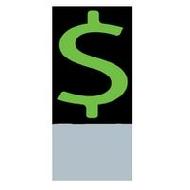
 |
|
| Financial Terms | |
| Treasury bill |
|
Information about financial, finance, business, accounting, payroll, inventory, investment, money, inventory control, stock trading, financial advisor, tax advisor, credit.
Main Page: inventory control, business, credit, tax advisor, payroll, financial, money, inventory, Also see related: homebuyer, insurance, homebuying, condo, homes, buy home, financing, home financing, home, |
Definition of Treasury bill
Treasury billShort-term U.S. government security issued at a discount from Treasury BillA short-term (less than one year) government discount bond. Treasury BillShort-term government security.
Related Terms:Treasury billsDebt obligations of the U.S. treasury that have maturities of one year or less. Maturities for Tbills U.S. Treasury billU.S. government debt with a maturity of less than a year. Bank discount basisA convention used for quoting bids and offers for treasury bills in terms of annualized Cash-equivalent itemsTemporary investments of currently excess cash in short-term, high-quality Discount securitiesNon-interest-bearing money market instruments that are issued at a discount and  Money marketMoney markets are for borrowing and lending money for three years or less. The securities in Riskless rateThe rate earned on a riskless investment, typically the rate earned on the 90-day U.S. treasury bill. Stock replacement strategyA strategy for enhancing a portfolio's return, employed when the futures TED spreadDifference between U.S. treasury bill rate and eurodollar rate; used by some traders as a Wi witreasury bills trade on a wi basis between the day they are auctioned and the day settlement is made. Marketable securityAn easily traded investment, such as treasury bills, which is market risk premiumRisk premium of market portfolio. Difference between market return and return on risk-free treasury bills. Debt InstrumentAny financial asset corresponding to a debt, such as a bond or a treasury bill. T-billSee treasury bill.  Risk-Free RateThe rate of return obtainable on government of Canada treasury bills. money market fundA type of mutual fund that invests primarily in short-term debt securities maturing in one year or less. These include treasury bills, bankers’ acceptances, commercial paper, discount notes and guaranteed investment certficates. qualified investments (Canada)Qualified investments is the term used for investments that can be held in an RSP. These investments generally include: Bill of exchangeGeneral term for a document demanding payment. Bill of ladingA contract between the exporter and a transportation company in which the latter agrees to Cash management billVery short maturity bills that the treasury occasionally sells because its cash Due billAn instrument evidencing the obligation of a seller to deliver securities sold to the buyer. Invoice billingbilling system in which the invoices are sent off at the time of customer orders are all separate Statement billingbilling method in which the sales for a period such as a month (for which a customer also Tax anticipation bills (TABs)Special bills that the treasury occasionally issues that mature on corporate Treasury bondsDebt obligations of the U.S. treasury that have maturities of 10 years or more. Treasury notesDebt obligations of the U.S. treasury that have maturities of more than 2 years but less than 10 years. Treasury securitiesSecurities issued by the U.S. Department of the treasury. Treasury stockCommon stock that has been repurchased by the company and held in the company's treasury. U.S. Treasury bondU.S. government debt with a maturity of more than 10 years. U.S. Treasury noteU.S. government debt with a maturity of one to 10 years. Bill of materialsA listing of all the materials and quantities that go to make up a completed product. Treasury stockShares that were sold to the public but have since been repurchased by the company in the open market. treasury stock is deducted from the equity section, and is therefore a contraequity account. bill of materialsa document that contains information about Treasury bondLong-term debt obligation of the U.S. government that makes Bill of materialsAn itemization of the parts and subassemblies required to create a treasury stockStock that has been repurchased by the company and held in its treasury. Bill and Hold PracticesProducts that have been sold with an explicit agreement that delivery Cost Plus Estimated Earnings in Excess of BillingsRevenue recognized to date under the percentage-of-completion method in excess of amounts billed. Also known as unbilled accounts Unbilled Accounts ReceivableRevenue recognized under the percentage-of-completion Bill of materials (BOM)A listing of all parts and subassemblies required to produce one Breeder bill of materialsA bill of material that accounts for the generation and Indented bill of materialA bill of material reporting format under which successively Matrix bill of materialA bill of materials chart listing the bills for similar products, Modular bill of materialA bill of material format in which components and subassemblies Multilevel bill of materialAn itemization of all bill of material components, including Phantom bill of materialA bill of materials for a subassembly that is not normally Repair bill of materialA special bill itemizing changes needed to refurbish an Single-level bill of materialA list of all components used in a parent item. Summarized bill of materialsA bill of materials format showing the grand total online bill paymentThe electronic payment of a bill via the Internet. The specified amount of the bill is electronically debited from your account. Related to : financial, finance, business, accounting, payroll, inventory, investment, money, inventory control, stock trading, financial advisor, tax advisor, credit. |